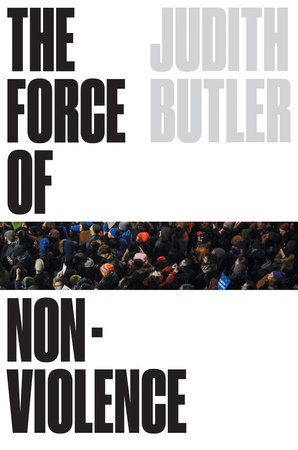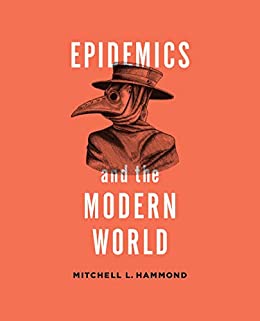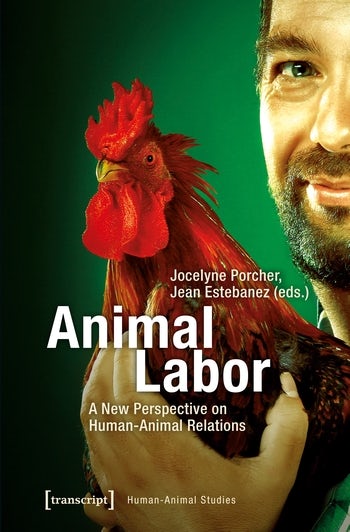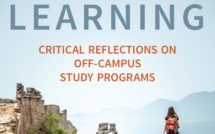
 The Force of Non-Violence
The Force of Non-Violence
By Judith Butler
Publisher: Verso
Recommended by Juliane K. Mendelsohn
Judith Butler’s new book has come at an odd time by any account. The day I started reading it I was on holiday to visit my family on the isolated east coast of South Africa―a scenery fit for Butler’s antihero, Robinson Crusoe―and waited impatiently to hear Cyril Ramaphosa’s (president of South Africa) address to the nation. That evening we sat around an old radio listening to him detail one of the most extensive COVID-19 lockdowns. Ramaphosa is, of course, following international protocol and trying to save the lives of a nation already weakened by HIV and TB, trying to prevent mass panic, and a break down of state control on a pandemic―but at what cost? How many South Africans will not survive the pervasive economic costs, the risk of going bankrupt in weeks if not days, or the increase in domestic violence, and how much surveillance will this entail? While some South Africans are merely being asked to interrupt their beachfront running routines, others, more “unruly” by circumstance, have been raided, incarcerated, and even shot down in the streets. Much of this violence should come as no surprise to us: Ours is a brutally violent world, the violence against women, gay and trans people, against “black and brown people”, against migrants and the stateless seems hard to fathom and, as Butler’s analysis points out, often impossible to grieve. We have been told violence is necessary and at times―be it the Soweto riots, the Black Panther Party, or the rhetoric of the NRA―just. Judith Butler turns all these beliefs and narratives around and replaces them with the moral, political, and psychoanalytic foundation for universal grievability or radical equality. Here, Robinson Crusoe becomes a false hero: no person is born with the skills to lead an industrial revolution; no man is an island; and no person is not born an infant in desperate need of a family and community. When asked whether the formulation of her “obligation to serve all inhabitants of the world” is not perhaps naïve, Butler rightly asks if “anyone wants to live in a world where nobody argues for this obligation”. We do not know what the world will look like post-COVID-19―as Freud (quoted by Butler) said in 1915 “the war in which we had refused to believe broke out and brought disillusionment”―but this is perhaps the greatest manifesto for reimagining and shaping that world.
 Epidemics and the Modern World
Epidemics and the Modern World
By Mitchell L. Hammond
Publisher: University of Toronto Press
Recommended by Louie Dean Valencia-García
Historian Mitchell L. Hammond’s Epidemics and the Modern World evidences to readers that disease knows no nationality—often crossing borders multiple times. The large-format book takes the reader on a journey through the ways diseases have affected people over time, but also pays close attention to explaining scientific understandings of those diseases. Hammond writes a book that “concentrates upon infectious diseases; pathological conditions caused by microbes that enter the body.” To do this, Hammond writes biographies of diseases to explore “environmental, social, and scientific change over the long term.” Epidemics and the Modern World is both an excellent reference for non-specialist scholars and an introduction to the modern history of medicine for advanced students and generalist audiences. Most helpfully, the author places medical terminology in bold and includes a glossary of terms at the end of the book, including primary sources for discussion throughout the text.
When Hammond describes the “modern world,” he is certainly situating it as only an historian would—beginning in the mid fourteenth century with the arrival of the Bubonic Plague to Europe. Throughout the book Hammond underlines the ways in which the disease forced localities to enact surveillance and quarantine measures through the state. Hammond’s chapter on the “evil of Naples,” “wild warts,” or the disease most simply known as “the pox,” is particularly insightful. Pox was considered punishment for sexual proclivities by Holy Roman Emperor Maximilian in 1495—a sexually transmitted infection, today better known as syphilis. Other chapters cover smallpox in the Americas, yellow fever, cholera, tuberculosis, influenza, malaria and HIV/AIDS, amongst others. Hammond’s excellent book shows the necessity of comparative and accessible scholarly work. More importantly, given the recent outbreak of the Covid-19 pandemic, Epidemics and the Modern World not only helps to put our current moment into historical context, but it helps us to understand what elements of the outbreak are truly unique to our moment and which are not.
 Animal Labor: A New Perspective on Human-Animal Relations
Animal Labor: A New Perspective on Human-Animal Relations
Edited by Jocelyne Porcher and Jean Estebanez
Publisher: Transcript-Verlag
Recommended by Hélène B. Ducros
Do animals work? If so, what do “working animals” do and how might they develop working intentions when they share activities with humans? When involved in human work, how do animals acquire competences, demonstrate subjectivities, participate in common objectives, and interpret and deviate from prescriptions and constraints? In this edited volume, sociologist Jocelyne Porcher and geographer Jean Estebanez assemble empirical scholarship that rethinks the human-animal relationship, interrogates the nature of joint work in that relationship, and reconsiders animals to account for their agency and consciousness in forming working practices that place them in a human world. Focusing on domestic/tamed animals, the volume’s contributions counter the theories of oppression that usually permeate anti-capitalist visions of work, putting forth a rebuttal of Marxist tenets of alienation, domination, and exploitation often invoked in labor and animal studies. Rather, this book innovatively approaches human-animal work relations through elements of cooperation and reciprocity characterizing animal husbandry, and concepts such as Donna Haraway’s “encounter value” and complementarity. As a liberating process for both humans and animals, joint work figures as an anti-utilitarian mutual exchange grounded in Marcel Mauss’ theory of gift and counter-gift.
Collectively, the chapters skillfully examine the intersubjectivity of the human-animal work relation, showing that as humans and animals learn skills together and invest in their respective professionalization, they also emancipate, self-realize, and enrich each other’s choices for better performing tasks. Positioning work at the heart of human-animal relations, the book features ethnographies involving various working animals, from screen actors to sheep dogs, elephants, or police and guide dogs, to show that animals are not passive when apprehending their work with humans. Advancing that “it is because we work together that we live together,” the book fills gaps in research to reconcile animal and human realms away from the lenses of violent productivism, welfarism, and abolitionism. At a time when more-than-human ontologies are on many disciplines’ agendas, Animal Labor is a thought-provoking volume that forges a path for a reconceptualization of human-animal interrelations and demonstrates that analyzing working animals is also one way to learn about ourselves as humans. It will draw a slew of thinkers interested in work as a defining parameter of society, such as sociologists, but also psychologists, geographers, animal rights and critical animal studies scholars, or philosophers engaged in ethics research.
Published on April 28, 2020.




